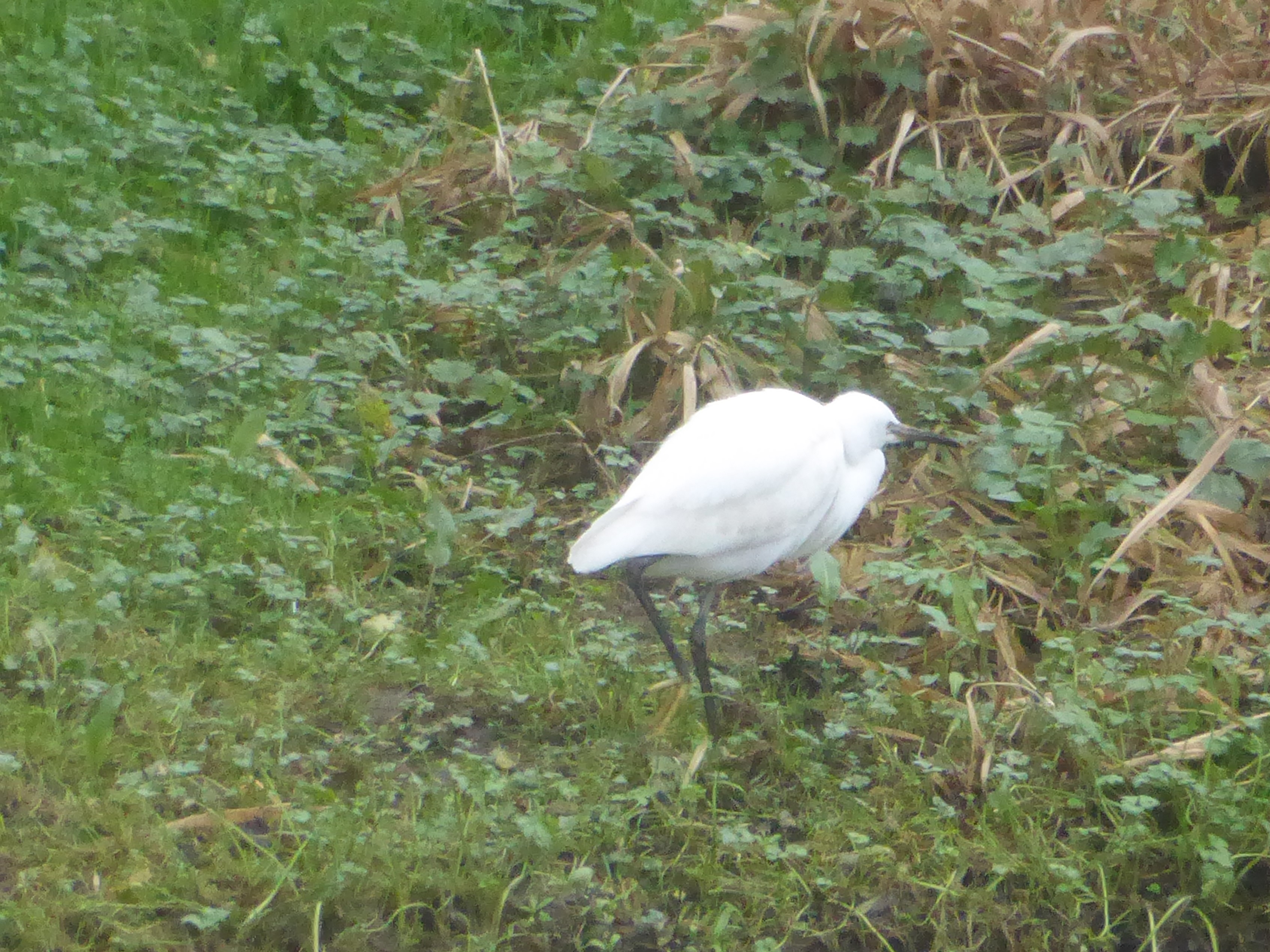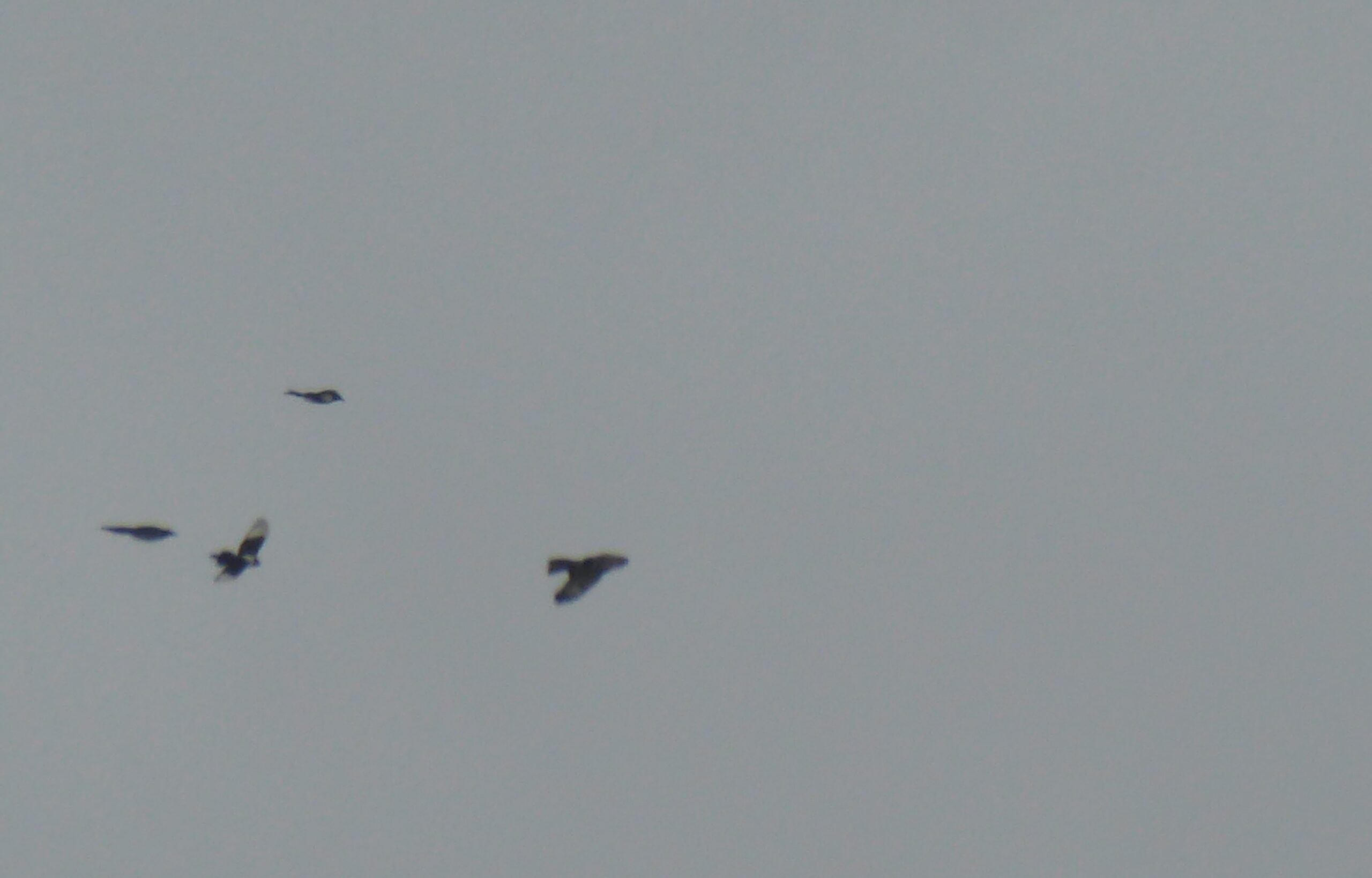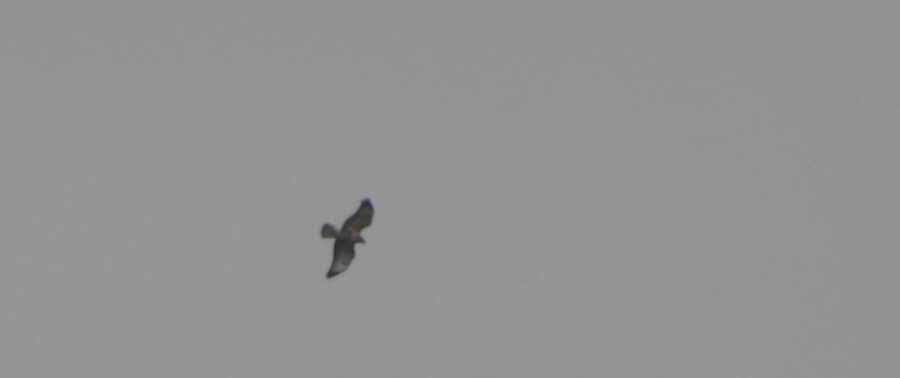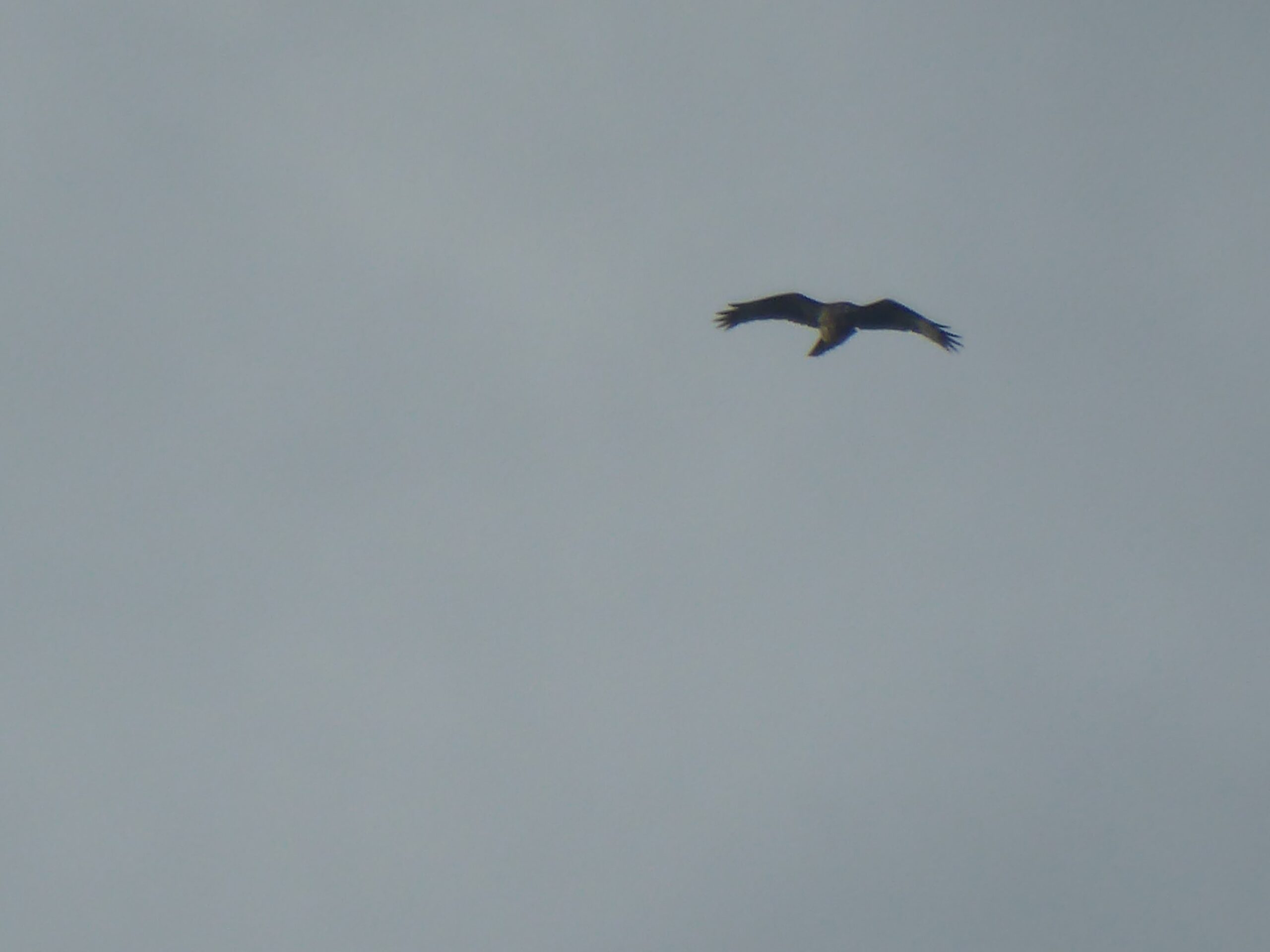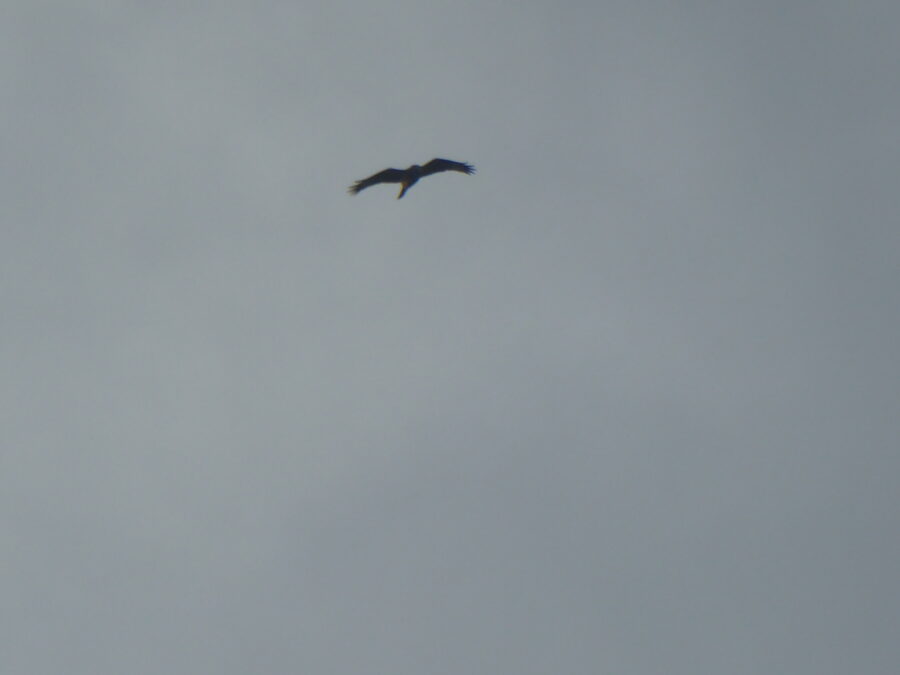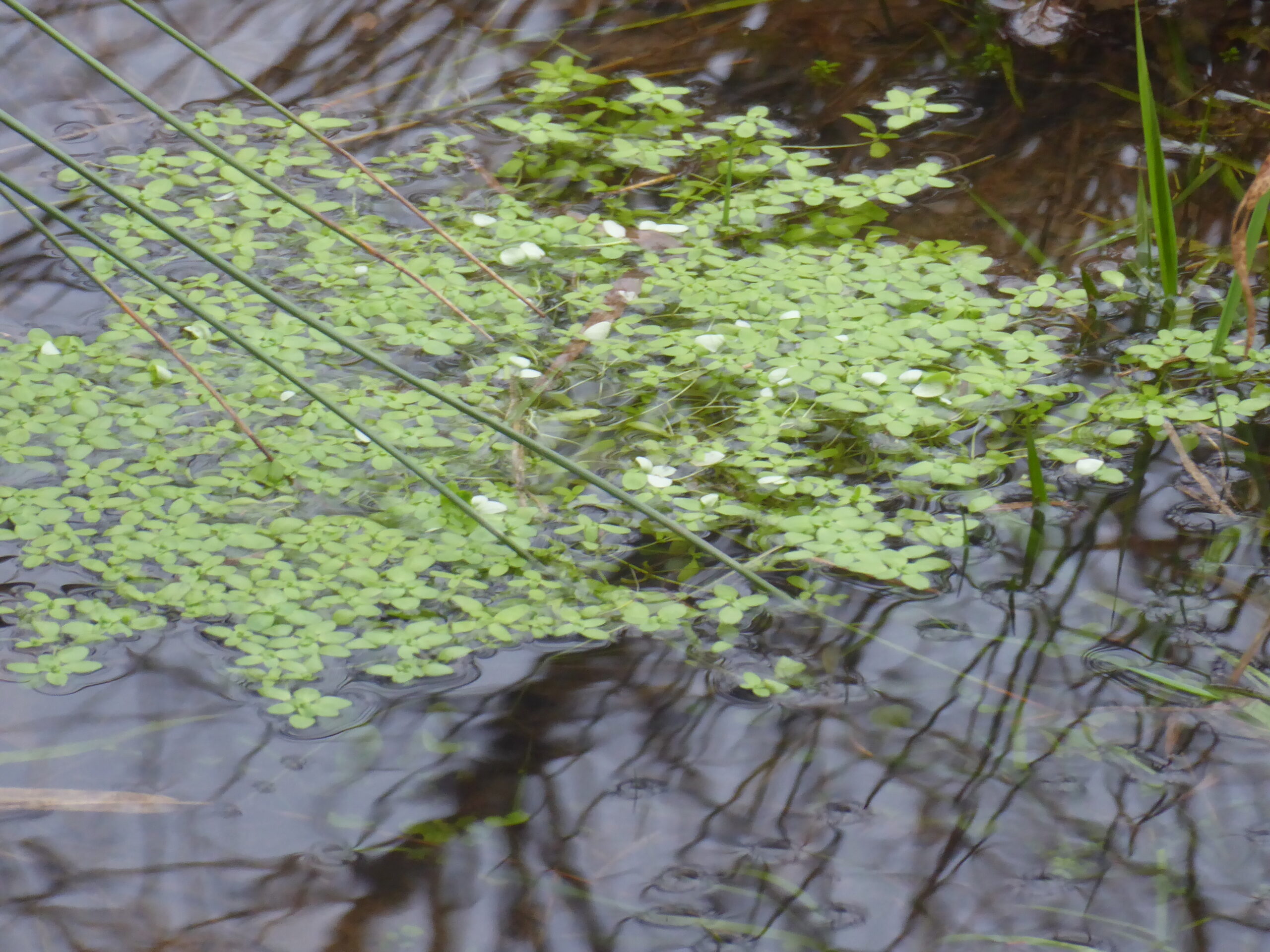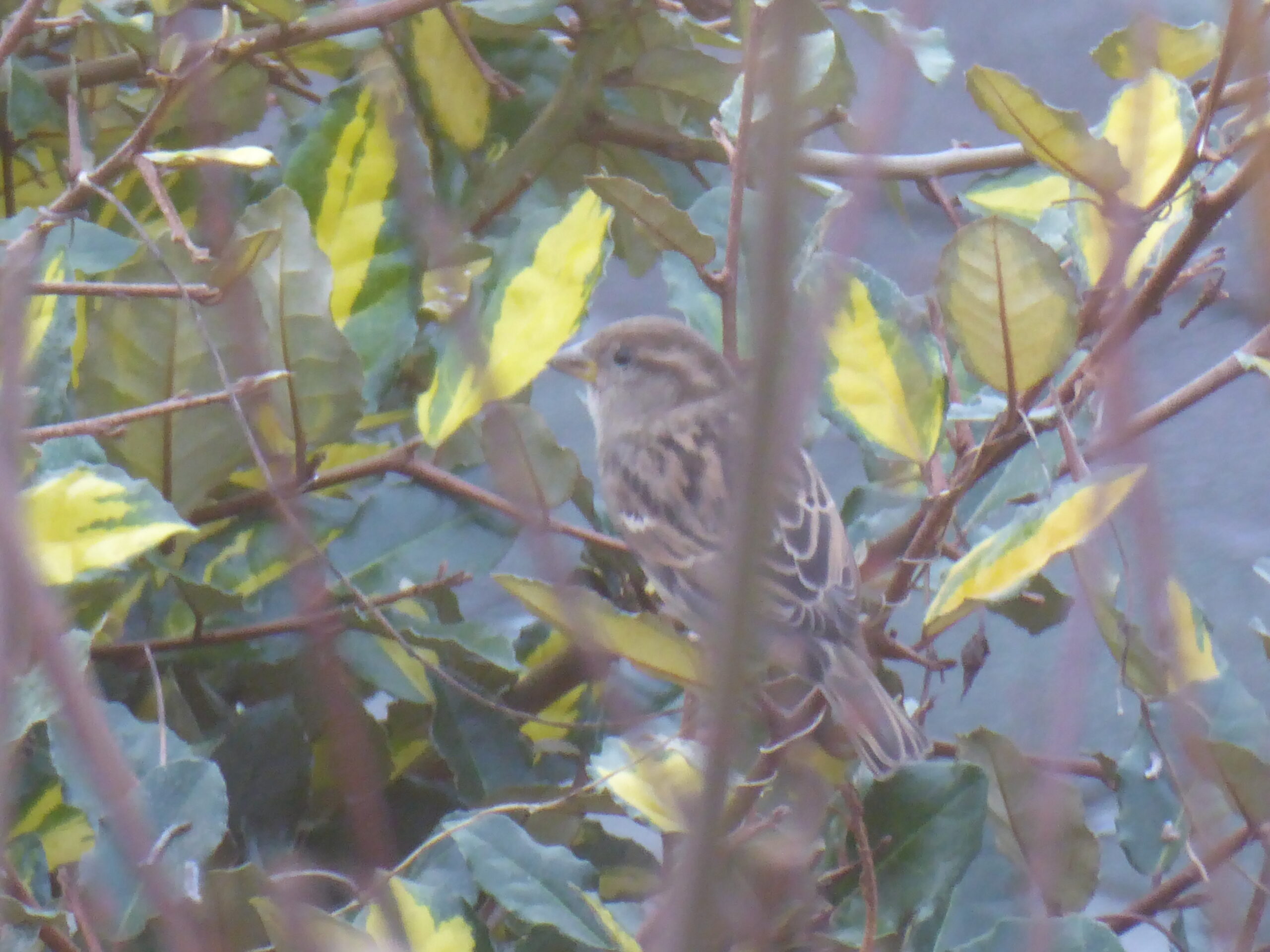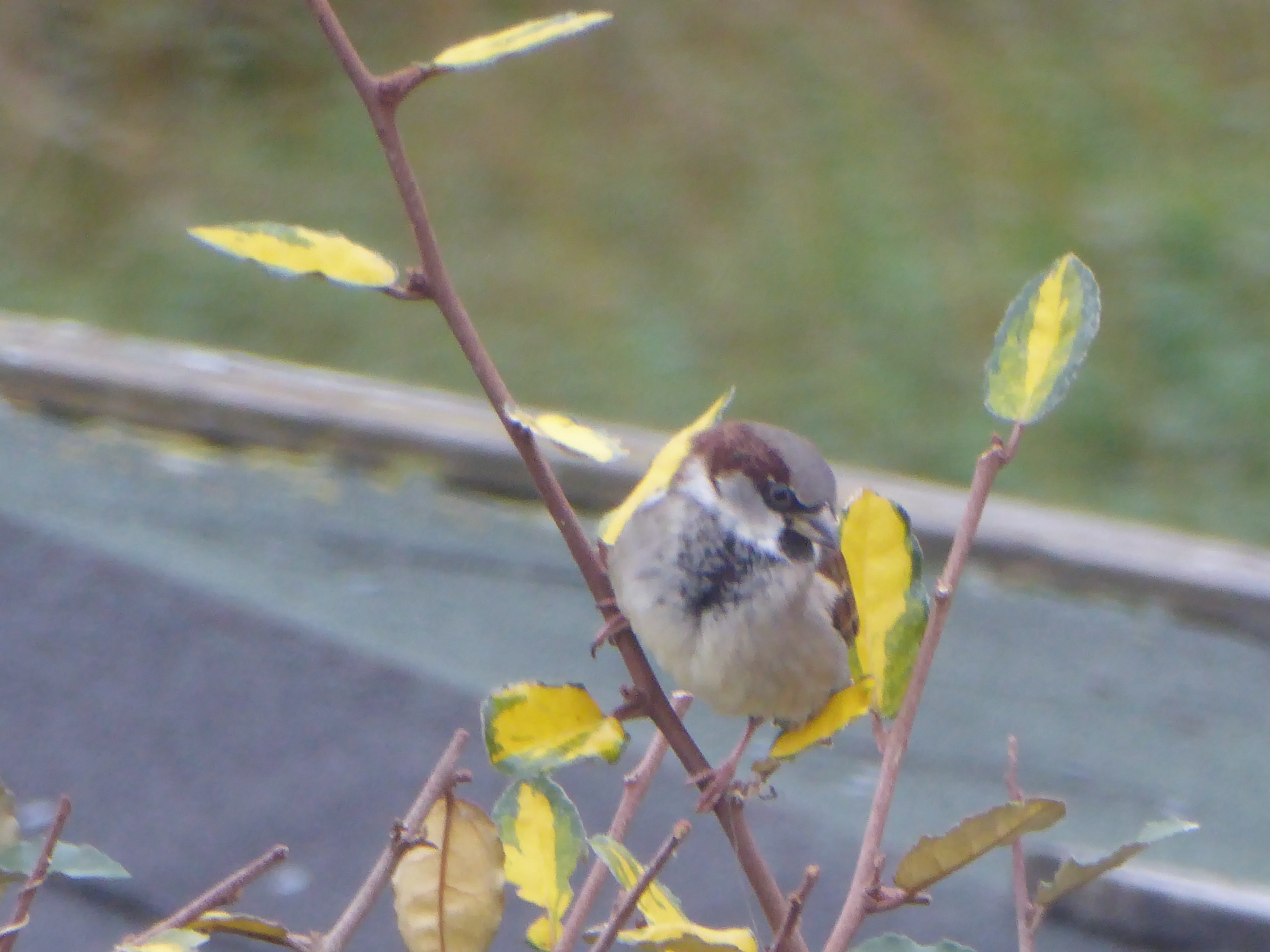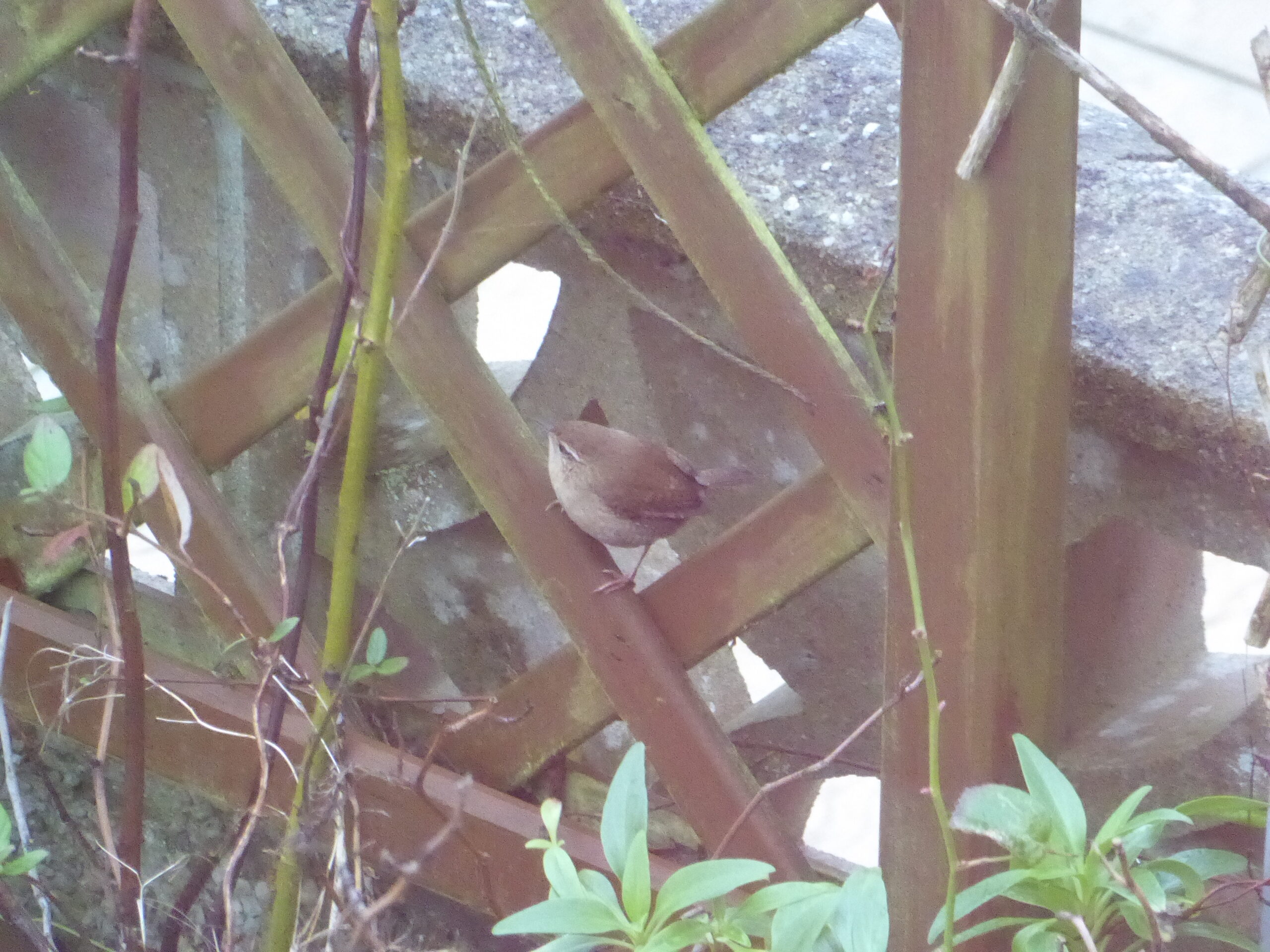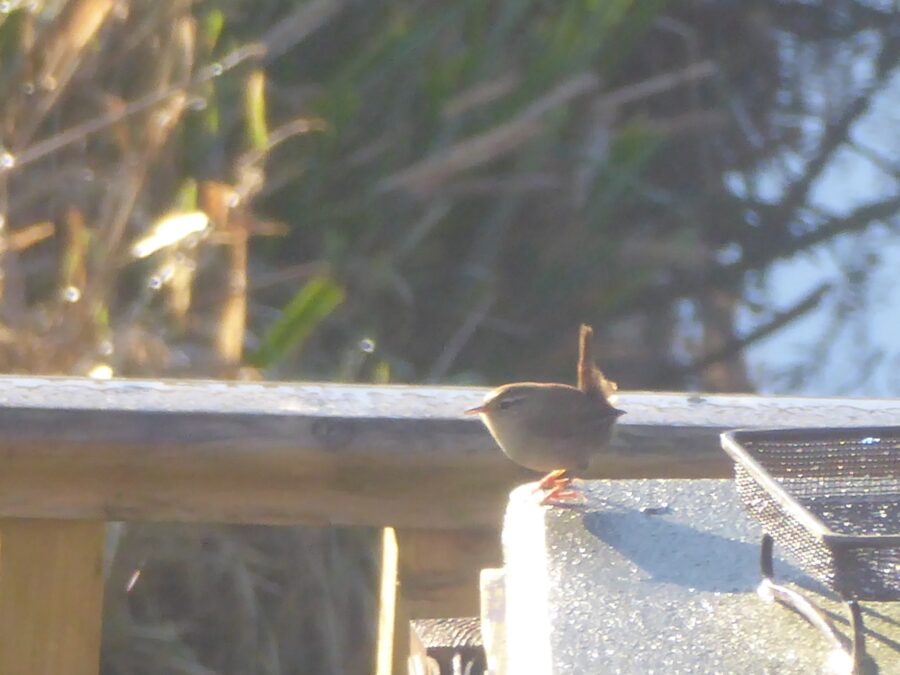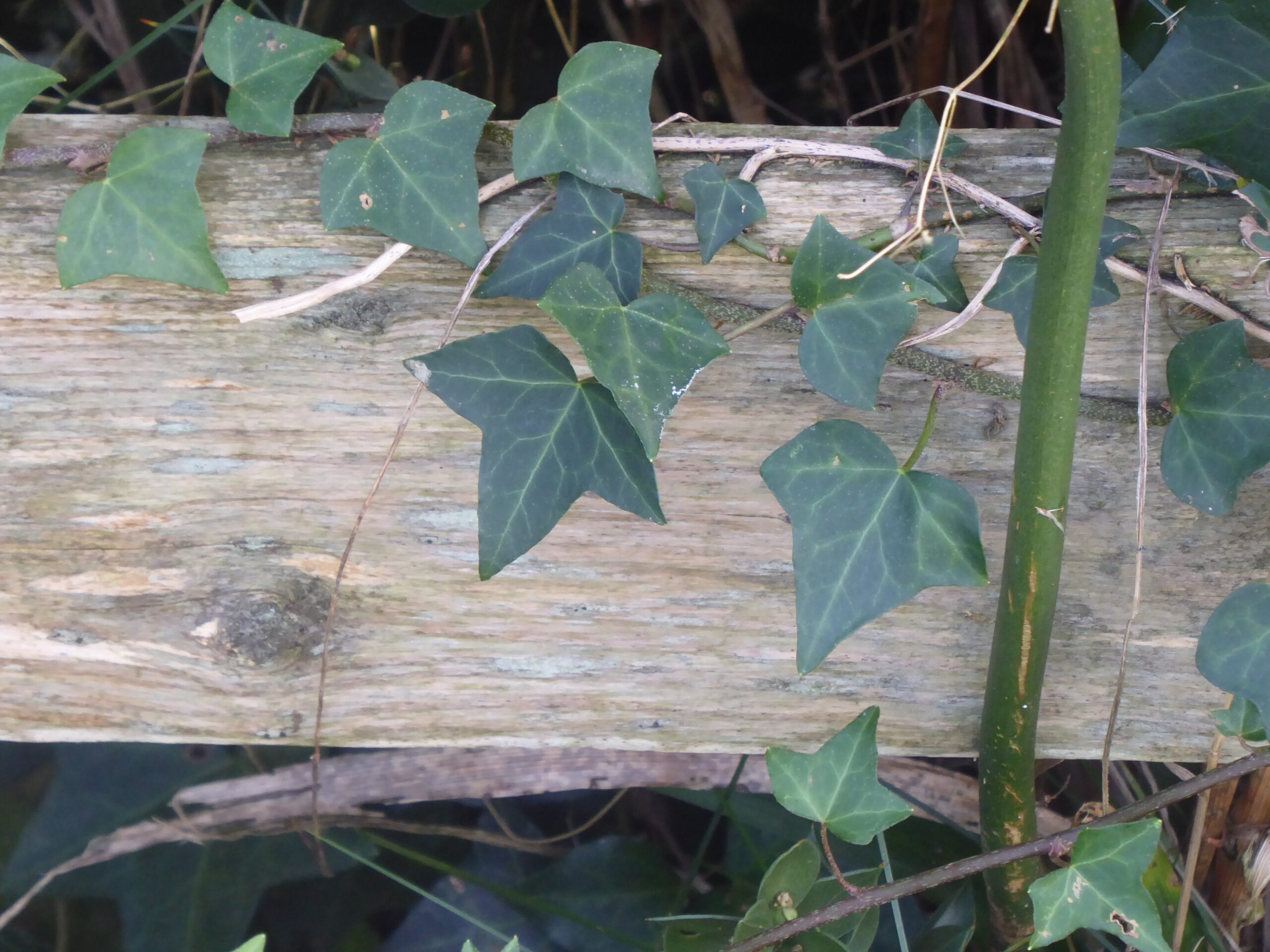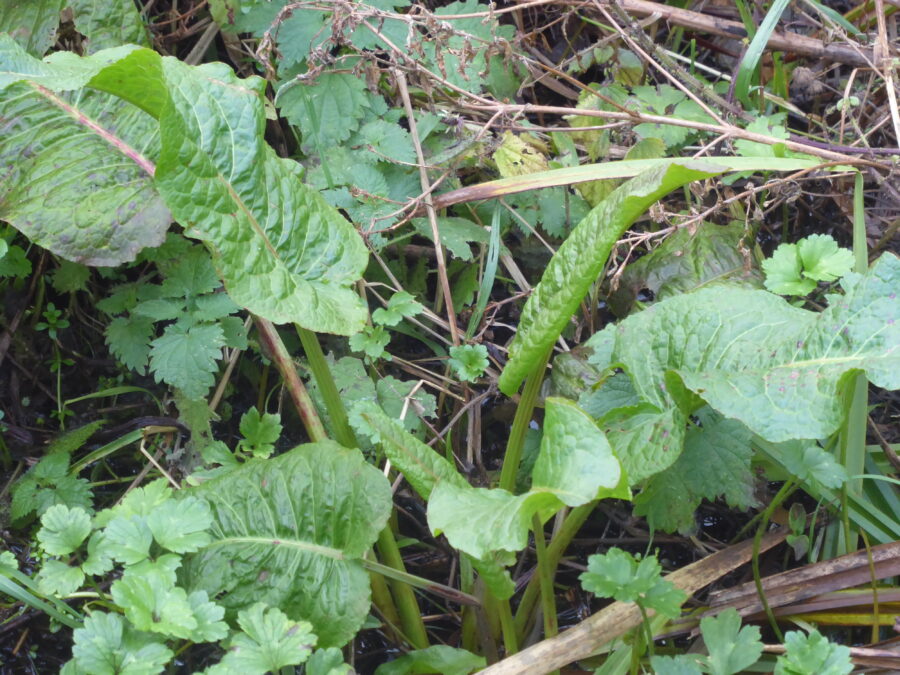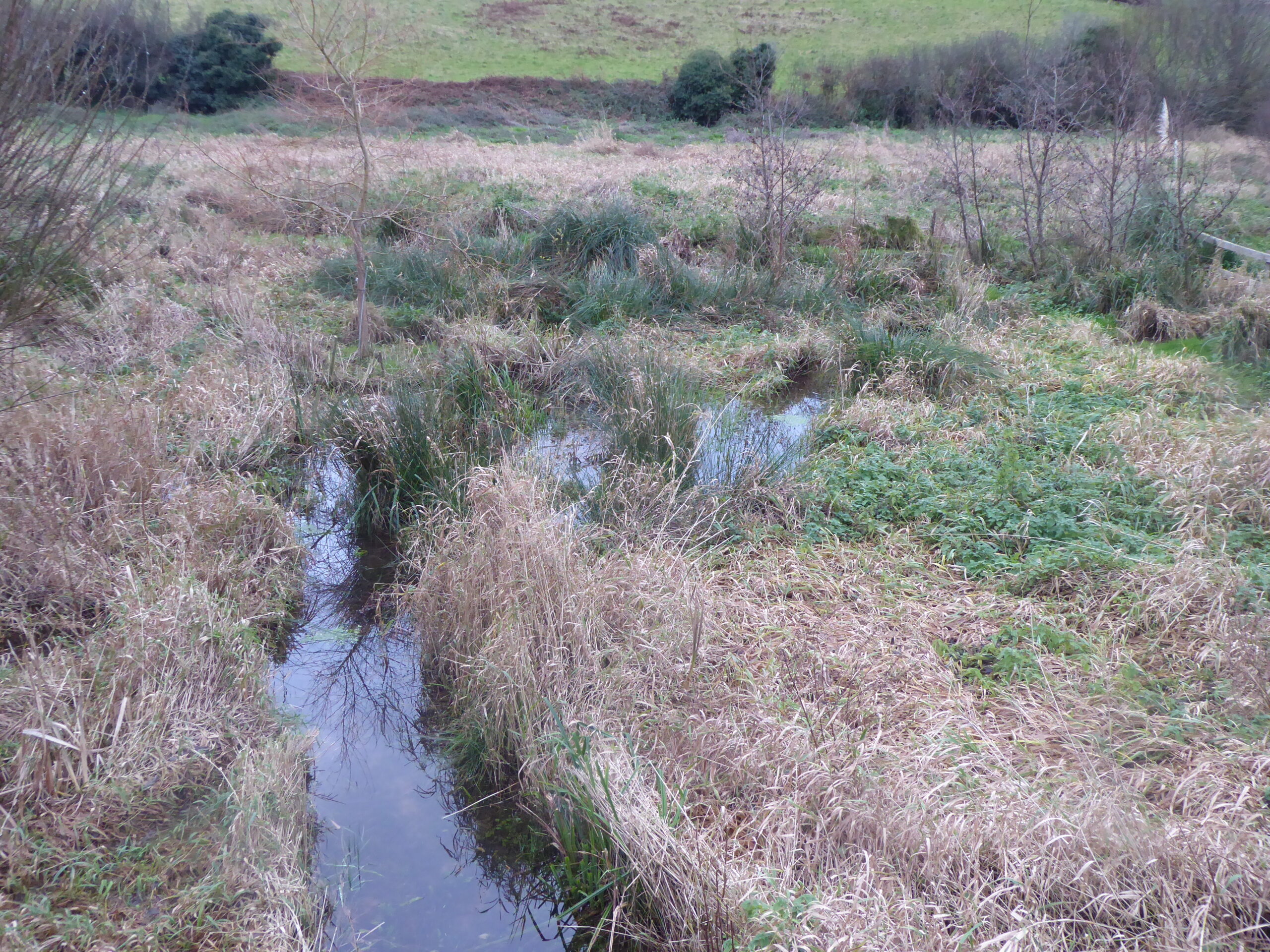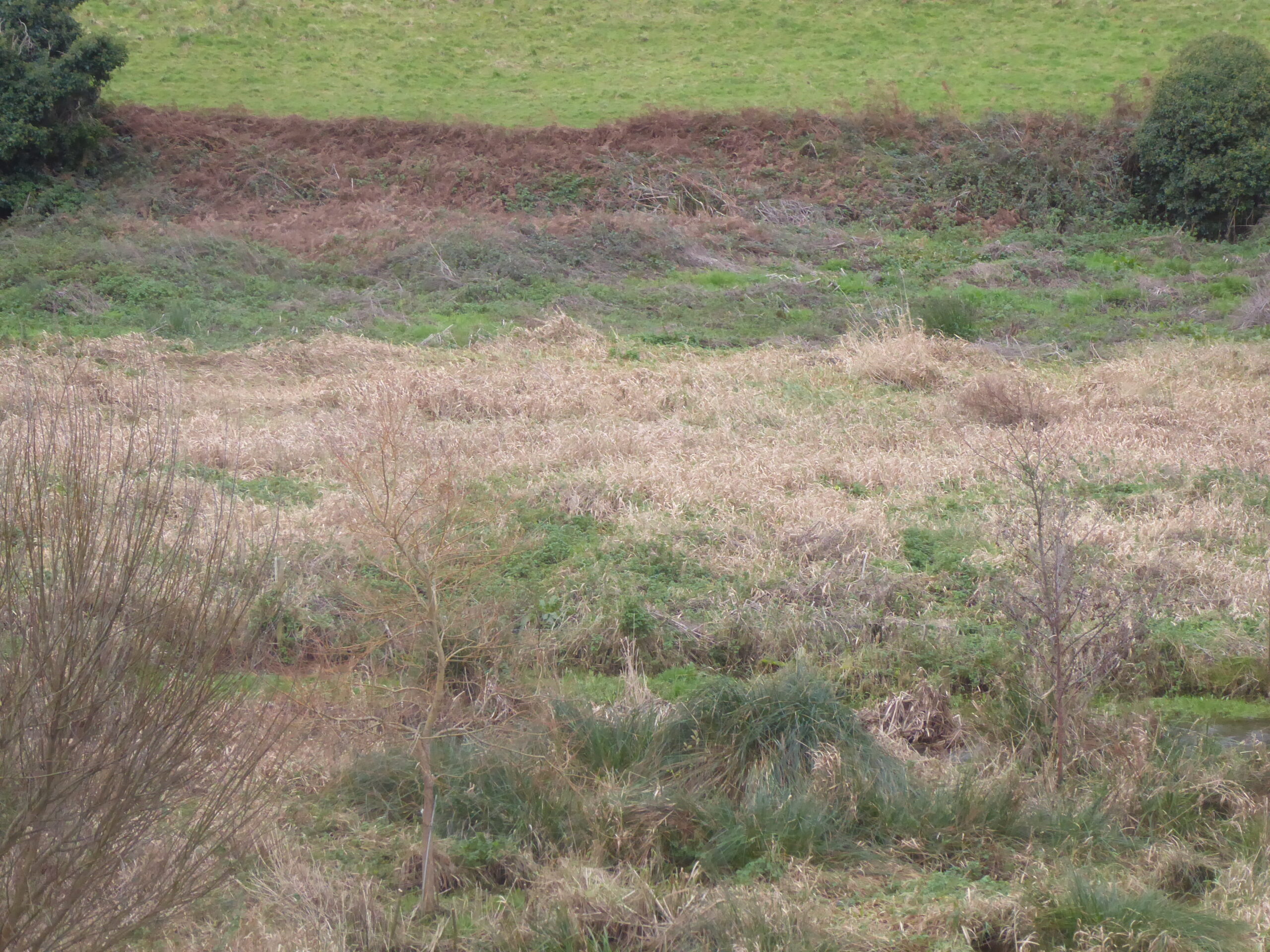Common Ivy can be found in a variety of habitats – from woodland to wasteland. They do not like extremes – arid or waterlogged. Common Ivy wraps itself around the fences and walls of our garden. The watermeadow is no exception. This ivy can be found twining round the wooden fence.
There are two types of ivy in the UK – Common Ivy and Atlantic Ivy, which is more common in the West Country. This is Common Ivy. There are two types of leaf. The immature leaves have 3-5 lobes (5-7 for Atlantic Ivy), as shown in the picture, but the mature leaves do not have lobes and tend to be oval or heart-shaped.
The flowers appear in the autumn and are dome-shaped clusters of small white blooms which turn into black berries.
Ivy is a valuable food source for many types of insects and birds. The berries are eaten by birds, including woodpigeons and blackbirds. The nectar and pollen are food for wasps, bees, hoverflies, and caterpillars. The structure of the evergreen plant provides shelter for bats, small mammals, birds, and insects.
Ivy clings to trees, walls, and fences, but is not parasitic, so it does not kill trees. It has its own root system and can fend for itself.
The Latin name Hedera means ‘clinging’ and helix is Latin for spiral, so Hedera helix means the clinging plant that spirals. It is in the same family, Araliaceae, as the False Caster Oil Plant. The flowers have a similar appearance.
